Claris FileMaker Pro 14 User guide
- Category
- Software
- Type
- User guide
This manual is also suitable for

FileMaker
®
Installation and New Features Guide
for FileMaker Pro 14 and FileMaker Pro 14 Advanced

© 2007-2015 FileMaker, Inc. All rights reserved.
FileMaker, Inc.
5201 Patrick Henry Drive
Santa Clara, California 95054
FileMaker and FileMaker Go are trademarks of FileMaker, Inc. registered in the U.S. and other
countries. The file folder logo and FileMaker WebDirect are trademarks of FileMaker, Inc. All other
trademarks are the property of their respective owners.
FileMaker documentation is copyrighted. You are not authorized to make additional copies or
distribute this documentation without written permission from FileMaker. You may use this
documentation solely with a valid licensed copy of FileMaker software.
All persons, companies, email addresses, and URLs listed in the examples are purely fictitious and
any resemblance to existing persons, companies, email addresses, or URLs is purely coincidental.
Credits are listed in the Acknowledgements documents provided with this software. Mention of third-
party products and URLs is for informational purposes only and constitutes neither an endorsement
nor a recommendation. FileMaker, Inc. assumes no responsibility with regard to the performance of
these products.
For more information, visit our website at http://www.filemaker.com.
Edition: 01

Contents
Chapter 1
Before you begin 5
About this guide 5
Where to find FileMaker documentation 5
Customer Support and Knowledge Base 6
Product notifications 6
About the license key 6
Requirements for features in Windows 7
Features not supported in Windows 7
Requirements for features in OS X 8
Features not supported in OS X 8
Converting the trial version to the full version of FileMaker Pro 8
Upgrading FileMaker Pro from a previous version 8
Opening files from previous versions 9
Updating your User Dictionary 9
Installing under a volume license 9
Chapter 2
Installing FileMaker Pro in Windows 11
Installation notes 11
Choosing to install 32- or 64-bit FileMaker Pro 12
Default installation locations 12
Installing FileMaker Pro 13
About installing Bonjour 14
About installing the Microsoft .NET Framework 15
Uninstalling, modifying, or repairing FileMaker Pro 15
Chapter 3
Installing FileMaker Pro in OS X 17
Installation notes 17
Default installation locations 17
Installing FileMaker Pro 18
Choosing to run 32- or 64-bit FileMaker Pro 18
Uninstalling FileMaker Pro 14 19

4
Chapter 4
New features 21
New user interface for creating scripts and calculations 21
New Launch Center window for opening files 21
Improved layout design tools and controls 22
New themes and improved style handling 22
Improved performance and usability 23
Script steps, script triggers, and functions 24
Script steps 24
Script triggers 25
Functions 25
Changed and removed features 26
FileMaker Pro 14 Advanced 26
Chapter 5
Where to go from here 27

Chapter 1
Before you begin
Welcome to your FileMaker
®
software. FileMaker Pro is designed to help
you manage information easily and
effectively.
About this guide
This Installation and New Features Guide tells you how to install
FileMaker
Pro 14 or FileMaker Pro 14 Advanced on your Windows or
Mac computer and introduces new features in the software.
Keep the following in mind:
1 This guide uses “FileMaker Pro” to refer to both FileMaker Pro and
FileMaker Pro
Advanced, unless describing specific
FileMaker Pro
Advanced features.
1 When a feature or procedure is specific to a particular platform, you
see instructions and illustrations that are also specific to that platform.
For features or procedures that are similar on both platforms, you
may see illustrations for either Windows or OS
X.
To send your feedback on this guide, visit
http://www.filemaker.com/company/documentation_feedback.html.
Where to find FileMaker documentation
To learn about, view, or download additional FileMaker documentation,
visit
http://www.filemaker.com/documentation.
For late-breaking information and release notes about FileMaker Pro,
visit
http://help.filemaker.com.

6 | Before you begin
Customer Support and Knowledge Base
To access FileMaker Customer Support, choose Help menu > Service
and Support.
To access the FileMaker Knowledge Base, visit http://help.filemaker.com.
Note Information in the FileMaker Knowledge Base and the FileMaker
Forum may not be available in all languages.
FileMaker support representatives can help you with installation, launch,
or reinstallation (not including data recovery) when your hardware
configuration meets the minimum system requirements for the software.
Visit
http://www.filemaker.com/cs.
Product notifications
FileMaker Pro 14 automatically checks for software updates (which
include minor software changes) every seven days, and checks for new
software versions (which include new and changed product features)
every thirty days.
To access and download software updates, you must have an Internet
connection. You can update your software either when you receive the
update notification or by choosing Help menu
> Check for Updates.
To learn more about new software versions, follow the instructions when
you receive a new version notification.
You can turn off notifications when you see the notification dialog box or
at any time in the Preferences dialog box. For more information, see
Help.
About the license key
FileMaker software comes with a unique, 35-digit alphanumeric license
key. Do not lose this license key. We recommend that you keep the license
key in a safe place in case the software ever needs to be reinstalled.
If you are installing the software using an electronic download, you
received an email message with a link to your software download page.
Your license key can be found on that page. If you purchased a DVD, you
can find your license key(s) on the back of the DVD sleeve. You must
enter a valid license key to install the software.

7
The license key ensures adherence to the FileMaker Pro or
FileMaker
Pro Advanced Software License, which allows for use of one
(1) copy of the software on a single computer at a time along with a
second copy for use on a home or portable computer, subject to the
restrictions in the Software License. For more information, refer to the
FileMaker
Pro or FileMaker Pro Advanced Software License located in
the application folder where you installed your software.
If another copy of the application installed with the same license key is
running on the network, the FileMaker
Pro application displays this error
message: “The maximum number of licensed users are currently using
this copy of FileMaker
Pro.”
To install FileMaker Pro on multiple computers, you must have a unique
license key for each installation, or obtain a volume license for multiple
computers. You must license one copy of FileMaker
Pro for each computer.
Requirements for features in Windows
Some features of FileMaker Pro for Windows require additional software.
Features not supported in Windows
In Windows, FileMaker Pro does not support the Perform AppleScript
and Speak script steps.
Feature Software requirement
Send Mail script step
using an email
application
Windows Live Mail or Microsoft Outlook
This requirement does not apply to SMTP mail.
Phone dialing Phone dialer or other Telephony API (TAPI)
compliant software
ODBC and JDBC
features
FileMaker ODBC and JDBC drivers are available in the
xDBC folder in the installation disk image, and in the
FileMaker Knowledge Base:
http://help.filemaker.com/
.
For more information, see FileMaker ODBC and JDBC
Guide and FileMaker Pro Help.

8 | Before you begin
Requirements for features in OS X
Some features of FileMaker Pro for OS X require additional software.
Features not supported in OS X
In OS X, FileMaker Pro does not support the Dial Phone and Send DDE
Execute script steps.
Converting the trial version to the full version
of FileMaker Pro
If you have installed the FileMaker Pro 14 trial version on your computer,
you can convert to the full version of FileMaker
Pro 14 without
uninstalling the trial version first. You can also upgrade your retail copy
from some earlier versions of FileMaker
Pro or FileMaker Pro Advanced
by entering an upgrade license key and the license key from some earlier
versions during the trial conversion process. For more information about
these options, see Help.
Upgrading FileMaker Pro from a previous
version
If you are upgrading FileMaker Pro from a previous version, FileMaker
recommends that you upgrade to the new version before uninstalling the
previous version.
Feature Software requirement
Send Mail script step
using an email
application
OS X Mail or Microsoft Outlook
This requirement does not apply to SMTP mail.
ODBC and JDBC
features
ODBC Manager from Actual Technologies (available
at http://www.odbcmanager.net
), which is a freeware
product not supported by FileMaker.
FileMaker ODBC and JDBC drivers are available in
the xDBC folder in the installation disk image, and in
the FileMaker Knowledge Base:
http://help.filemaker.com/
.
For more information, see FileMaker ODBC and
JDBC Guide and FileMaker Pro Help.

9
To upgrade FileMaker Pro from a previous version:
1. Install the upgrade using the 35-character license key, which was
included with the software download or is on the back of the DVD
sleeve.
2. Move plug-ins, dictionary information, and your preferences to the
new version of FileMaker
Pro. For information about moving your
preferences, refer to the FileMaker Knowledge Base available at
http://help.filemaker.com.
3. If you plan to use only the latest version, uninstall the previous
version.
If you choose to uninstall the previous version before upgrading to the
latest version, make sure you have the license key for the previous
version. When installing FileMaker
Pro with an upgrade license key, the
installer searches your hard drive for the previous version. If a previous
version is not located, you are asked to enter the license key for the
previous version of the product.
Opening files from previous versions
FileMaker Pro 14 can open files created in FileMaker Pro versions 7.x,
8.x, 9.x, 10.x, 11.x, 12.x, or 13.x. To use files created with versions of
FileMaker
Pro earlier than version 12, you’ll need to convert them to the
FileMaker
Pro 12 file format. For more information about converting files,
see Help.
Updating your User Dictionary
If you added words to a User Dictionary in a previous version of
FileMaker
Pro, you can use it with FileMaker Pro 14. See FileMaker Pro
Help for information about converting a User Dictionary.
Installing under a volume license
If you’re installing multiple copies of FileMaker Pro under a volume license,
or if you want to do a silent install, you can automate the process. Use the
file, Assisted
Install.txt, with the installer to bypass the usual install dialog
boxes. For more information, see FileMaker
Pro Network Install Setup
Guide at
http://www.filemaker.com/documentation. For information on
volume licensing, visit http://www.filemaker.com.

10 | Before you begin

Chapter 2
Installing FileMaker Pro
in
Windows
Before you begin the installation process, exit other open programs and
save your work. For late-breaking information and release notes about
FileMaker
Pro, visit http://help.filemaker.com.
Installation notes
Before you install FileMaker Pro, review the following notes:
1 To see system requirements, visit http://www.filemaker.com/products.
1 To install FileMaker Pro, you must have Windows administrator
privileges and use an administrator account and password.
1 If your computer is running virus protection software, turn it off prior to
installing FileMaker Pro, and then turn it back on afterward.
1 During installation, you can choose whether to install all program
features (Complete), or to install only selected portions of the program
(Custom). For example, you may choose not to install certain features
in order to save disk space.
1 At the start of installation, you choose a language version for the
FileMaker Pro installer. The default selection matches your operating
system language. A Complete install will install only the language
version you choose. You can install additional language versions by
choosing Custom install, then selecting other language packs from the
list of supported languages.
1 Prior to an upgrade installation, FileMaker software scans all hard drives
and volumes connected to your system, searching for previous
versions. This scan may take several minutes if you have multiple drives
or volumes.
1 You can also install FileMaker Pro using the command line and remotely
using a networked volume. See FileMaker Pro Network Install Setup
Guide.

12 | Installing FileMaker Pro in Windows
Choosing to install 32- or 64-bit FileMaker Pro
If you are using a supported 32-bit version of Windows, you can install
only the 32-bit version of FileMaker
Pro.
On supported 64-bit versions of Windows, you can install either the 32-
or 64-bit version of FileMaker
Pro. You must install the 64-bit version of
FileMaker
Pro if you plan to use FileMaker Pro with the 64-bit version of
any of the following software:
1 an email client (for example, 64-bit Microsoft Outlook) to send email
from FileMaker
Pro
1 FileMaker Pro plug-ins
1 ODBC client drivers for external SQL sources
1 audio/video codecs to play content in interactive containers
Otherwise, you can install the 32-bit version of FileMaker Pro.
Default installation locations
By default, FileMaker Pro and FileMaker Pro Advanced are installed in
one of the following folders.
1 On 32-bit Windows systems:
C:/Program Files/FileMaker/<FileMaker product>
1 On 64-bit Windows systems:
1 32-bit FileMaker Pro is installed in
C:/Program Files (x86)/FileMaker/<FileMaker product>
1 64-bit FileMaker Pro is installed in
C:/Program Files/FileMaker/<FileMaker product>
where <FileMaker product> is FileMaker Pro 14 or
FileMaker
Pro 14 Advanced. During the installation you can choose a
different drive or folder.

13
Installing FileMaker Pro
You must use the installation program to install FileMaker Pro—you can’t
install FileMaker
Pro by dragging files to your hard disk.
To install FileMaker Pro on your hard disk:
1. Do one of the following:
1 If you received your software electronically, after downloading the
file for the 32- or 64-bit version of FileMaker
Pro, double-click the
installation icon (.exe file).
1 If you are installing FileMaker Pro using a DVD, insert the DVD
into your DVD drive, open the DVD window, then click the
installation icon to install the 32-bit version.
To install the 64-bit version, click the browse icon, open the 64-bit
folder, then double-click Setup.exe.
2. Install FileMaker Pro by following the onscreen instructions.
For details, see “Installation notes” on page 11.
3. When the installation is complete, the Product Registration dialog box
appears.
Click to install
the 32-bit
application
Click to exit
Click to browse
and view the
contents of the
DVD

14 | Installing FileMaker Pro in Windows
About installing Bonjour
The Bonjour service enables automatic discovery of computers, devices,
and services on IP networks. You need to have Bonjour installed on your
system for remote hosts to be discovered.
If Bonjour is not installed or the service is not running, FileMaker Pro
can’t discover remote hosts. For example, you won’t be able to view
hosted files in the Hosts tab in the Launch Center window or display the
list of remote files to use as your external data source.
Without Bonjour, you have to manually enter the IP addresses for remote
files.
During the FileMaker Pro installation, the installer uses the following
process:
1 If Bonjour isn’t detected, the installer alerts you and prompts you to
install Bonjour.
1 If Bonjour is detected but the installed version is not supported by
FileMaker, the installer alerts you. It prompts you to manually uninstall
the older version of Bonjour and manually install the version supported
by FileMaker.
1 If Bonjour is detected and the installed version is supported by
FileMaker, the installer doesn’t alert you and doesn’t install Bonjour.
To install Bonjour manually:
1. Open the FileMaker Pro installation folder.
2. Open the Files folder, then open the Bonjour folder.
3. Open the 32-bit or 64-bit folder based on your version of Windows.
4. Double-click the Bonjour (32-bit) or Bonjour64 (64-bit) icon.
5. Follow the onscreen instructions to install Bonjour.

15
About installing the Microsoft .NET
Framework
The Microsoft .NET Framework provides common functionality for many
Windows applications. You need to have a specific version of .NET
installed on your system for FileMaker
Pro to run.
If .NET is not installed when you start FileMaker Pro, an error message
appears and FileMaker
Pro will not run.
During the FileMaker Pro installation, the installer uses the following
process:
1 If the required version of .NET isn’t detected, the installer alerts you and
prompts you to install .NET. The .NET installer requires Internet access
to download the necessary files. If you choose not to install .NET at this
time, you can install it manually later, but you will not be able to use
FileMaker Pro until .NET is installed.
1 If the required version of .NET is detected, the installer doesn’t alert
you and doesn’t install .NET.
To install .NET manually:
1. Open the FileMaker Pro installation folder.
2. Open the Files folder, then open the DotNet folder.
3. Double-click the icon.
4. Follow the onscreen instructions to install .NET.
Uninstalling, modifying, or repairing
FileMaker
Pro
You can use Control Panel in Windows to uninstall FileMaker Pro,
replace missing or corrupt files, or change which features are installed.
For more information, refer to Windows Help and Support.
When you repair FileMaker Pro, you will be prompted to enter your
license key.

16 | Installing FileMaker Pro in Windows

Chapter 3
Installing FileMaker Pro in OS X
Before you begin the installation process, quit other open programs and
save your work. For late-breaking information and release notes about
FileMaker
Pro, visit http://help.filemaker.com.
Installation notes
Before you install FileMaker Pro, review the following notes:
1 To see system requirements, visit http://www.filemaker.com/products.
1 To install FileMaker Pro, you must have OS X administrator privileges
and use an administrator account and password.
1 If your computer is running virus protection software, turn it off prior to
installing FileMaker Pro, and then turn it back on afterward.
1 During installation, you can choose whether to install all the program
files (Standard Install), or to install portions of the program (Custom
Install). For example, you may choose not to install certain features in
order to save disk space.
1 A Standard Install installs FileMaker Pro in the language matching your
operating system. You can install additional language versions by
choosing Custom Install, then selecting other language packs from the
list of supported languages.
1 Prior to an upgrade installation, FileMaker software scans all hard drives
and volumes connected to your system, searching for previous
versions. This scan may take several minutes if you have multiple drives
or volumes.
1 You can also install FileMaker Pro remotely using Apple Remote
Desktop. See FileMaker Pro Network Install Setup Guide.
Default installation locations
By default, FileMaker Pro and FileMaker Pro Advanced are installed in
the following location:
[drive]/Applications/<FileMaker product>
where <FileMaker product> is FileMaker Pro 14 or FileMaker Pro 14
Advanced.
During the installation you can choose a different drive or
folder.

18 | Installing FileMaker Pro in OS X
Installing FileMaker Pro
You must use the installation program to install FileMaker Pro—you can’t
install FileMaker
Pro by dragging files to your hard disk.
To install FileMaker Pro on your hard disk:
1. Do one of the following:
1 If you received your software electronically, after downloading the
file, double-click the disk image icon (.dmg file).
1 If you are installing FileMaker Pro using a DVD, insert the DVD
into your DVD drive, then open the DVD window.
2. Locate and double-click the FileMaker Pro installation icon.
3. Install FileMaker Pro by following the onscreen instructions.
For details about installation, see “Installation notes” on page 17.
4. When the installation is complete, the Product Registration dialog box
appears.
Choosing to run 32- or 64-bit FileMaker Pro
FileMaker Pro is installed as a single application bundle containing both
32- and 64-bit versions. By default, FileMaker
Pro runs in 64-bit mode.
You must run FileMaker
Pro in 32-bit mode if you plan to use
FileMaker
Pro with 32-bit versions of any of the following software:
1 an email client to send messages from FileMaker Pro
1 FileMaker Pro plug-ins
1 ODBC client drivers for external SQL sources
1 audio/video codecs to play content in interactive containers
Otherwise, you can run FileMaker Pro in the default 64-bit mode.
FileMaker Pro
installation icon

19
To switch between 64- and 32-bit mode:
1. Quit FileMaker Pro.
2. In Finder, open the Applications folder, then select FileMaker Pro in
the FileMaker
Pro 14 folder, or select FileMaker Pro Advanced in
the FileMaker
Pro 14 Advanced folder.
3. Choose File menu > Get Info.
4. Select Open in 32-bit mode to run in 32-bit mode.
Clear this option to run in 64-bit mode.
5. Start FileMaker Pro.
Uninstalling FileMaker Pro 14
To uninstall FileMaker Pro 14:
1. Drag the FileMaker Pro 14 or FileMaker Pro 14 Advanced folder and
all its contents from the Applications folder to the Trash.
2. Drag the FileMaker Pro or FileMaker Pro Advanced preferences file
to the Trash.
The pathname for the preferences file is:
For FileMaker Pro:
<home>/Library/Preferences/com.filemaker.client.pro12.plist
For FileMaker Pro Advanced:
<home>/Library/Preferences/com.filemaker.client.advanced12.plist

20 | Installing FileMaker Pro in OS X
Page is loading ...
Page is loading ...
Page is loading ...
Page is loading ...
Page is loading ...
Page is loading ...
Page is loading ...
Page is loading ...
-
 1
1
-
 2
2
-
 3
3
-
 4
4
-
 5
5
-
 6
6
-
 7
7
-
 8
8
-
 9
9
-
 10
10
-
 11
11
-
 12
12
-
 13
13
-
 14
14
-
 15
15
-
 16
16
-
 17
17
-
 18
18
-
 19
19
-
 20
20
-
 21
21
-
 22
22
-
 23
23
-
 24
24
-
 25
25
-
 26
26
-
 27
27
-
 28
28
Claris FileMaker Pro 14 User guide
- Category
- Software
- Type
- User guide
- This manual is also suitable for
Ask a question and I''ll find the answer in the document
Finding information in a document is now easier with AI
Related papers
-
Claris Pro 15 User guide
-
Claris FileMaker Pro 13 Advanced User guide
-
Claris Pro 12 User guide
-
Claris Pro 10 Advanced User guide
-
Claris Pro 11 Advanced User guide
-
Claris FileMaker Pro 16 User guide
-
Claris Pro 9 Advanced User guide
-
Claris Pro 8.5 User guide
-
Claris FileMaker Server 14 Quick start guide
-
Claris Server 12 Quick start guide
Other documents
-
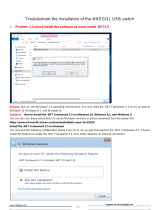 iKKEGOL A01D9 Installation guide
iKKEGOL A01D9 Installation guide
-
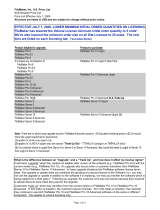 Filemaker TT767E/A User manual
Filemaker TT767E/A User manual
-
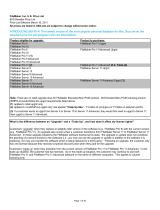 Filemaker H2804LL/A Datasheet
Filemaker H2804LL/A Datasheet
-
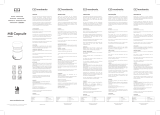 Monbento MB Capsule Graphic Jungle Owner's manual
Monbento MB Capsule Graphic Jungle Owner's manual
-
Fredenstein Bento 6S User manual
-
Fredenstein Bento 10DS User manual
-
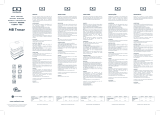 Monbento MB Tresor Graphic Licorne Owner's manual
Monbento MB Tresor Graphic Licorne Owner's manual
-
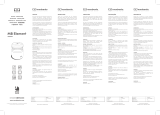 Monbento MB Element Metallic Silver Owner's manual
Monbento MB Element Metallic Silver Owner's manual
-
Fredenstein Bento 10S User manual
-
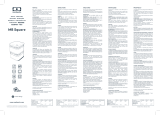 Monbento MB Square Graphic Blossom Owner's manual
Monbento MB Square Graphic Blossom Owner's manual


































